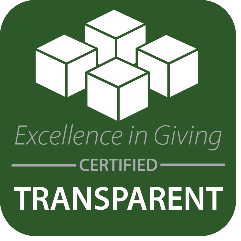According to a United Nations report on the state of human trafficking, which it refers to as a “modern form of slavery,” 40% of the countries the organization investigated had not recorded a single conviction against perpetrators.
This stunning data point makes it clear that, while human trafficking convictions are on the rise around the world, law enforcement methods may not be as effective to prevent further abuse. We still have a lot of work to do in order to put and keep these criminals behind bars.
So who exactly are these victims and how are they transported outside the reach of police, investigators, and government officials?
Global Trafficking Patterns
The two most “major” forms of human trafficking are actually “intra-regional” and “domestic,” the UN found.
This may appear at odds with the common conception of human trafficking: children taken to the other side of the globe.
In fact, the majority of human trafficking occurs closer in proximity to where victims currently live. Still, foreign victims are usually more vulnerable in domestic trafficking cases.
Because law enforcement agencies around the world record and report human trafficking cases differently and data is often under-reported, it’s difficult to pinpoint precisely the points of origin and the transit methods employed by criminals.
The UN did note that East Asian victims had been identified in more than 20 countries, suggesting that certain victims might be transported farther distances than others.
After this first criminal act, victims may be driven great distances in bondage. From there, perpetrators may rely on air or sea to transport victims internationally, with the intent to sell them to other illegal markets.
The American Problem
As we’ve noted before, dollar for dollar, human trafficking in the U.S. is actually worse than it is internationally.
- Roughly 100,000-150,000 human trafficking victims are currently held as commercial sex slaves.
- Every 2.5 hours a child is taken by human traffickers.
- Trafficked children are used for sex more than five times per day.
These appalling statistics are heart-wrenching and unconscionable. The fact that these events occur within American borders further shows that this is truly a global issue that can affect anyone and everyone regardless of location or the strength of existing values like democracy, freedom and civil rights.
Depending on the location, the most prevalent forms of transportation of everyday life — ie., automobile, plane, train, boat, etc. — are used as methods of human trafficking. Many human trafficking stories begin with a victim getting into someone’s car. Insomuch as using common rideshare apps, such as Uber and Lyft to transport their victims, or even fly their victims across the country to make money.
Who Do Criminals Target?
In the U.S. specifically, 96% of trafficking victims are women or girls. About 50% are children.
On a global scale, some of the most vulnerable populations of society are targeted by predators. That includes those who:
- Don’t speak the local language and aren’t citizens.
- Are migrants or refugees.
- Are teens and children without homes or who have run away.
- Are members of minority groups based on sexual, gender or racial identity.
- Have a history of substance abuse.
- Have mental or physical disabilities.
- Are survivors of past violence.
- Are or have been in foster care or juvenile detention facilities.
Criminals also exploit current events, such as toppled governments, climate disasters, terrorism, and war. As the faults in society are exposed and rent open, criminals rush in to take advantage of vulnerable people — even those who didn’t previously fit into any of the categories above. But across all of the United States, another factor is that it is an economic disadvantage.
Types of Human Trafficking
Human trafficking unfortunately takes many forms, with sexual exploitation by far the most common. Forced labor is the next most common.
Based on age and gender, criminals sell victims into bondage to be abused in ways that are prevalent to specific regions and people. Victims may also be held and sold in groups, which impacts the method of their transfer: in plain sight, underground, as cargo, etc.
To Help, Report It – Join the Fight
Some governments are more forthcoming with human trafficking data than others. And some even deliberately obstruct outside investigations or cover-up the existence of modern-day slavery.
On an individual level, the best thing you can do to help solve more cases is to report suspicious activity and donate money to raise awareness. Every victim who is rescued is reconnected to the support services they need and given specialized care.
DeliverFund uses donations, cutting-edge technology, and trains and equips law enforcement across the country to prevent trafficking before it starts and to rescue those still in bondage.
You can help too.
Report human trafficking to the proper authorities or donate to us to help us do the same!









